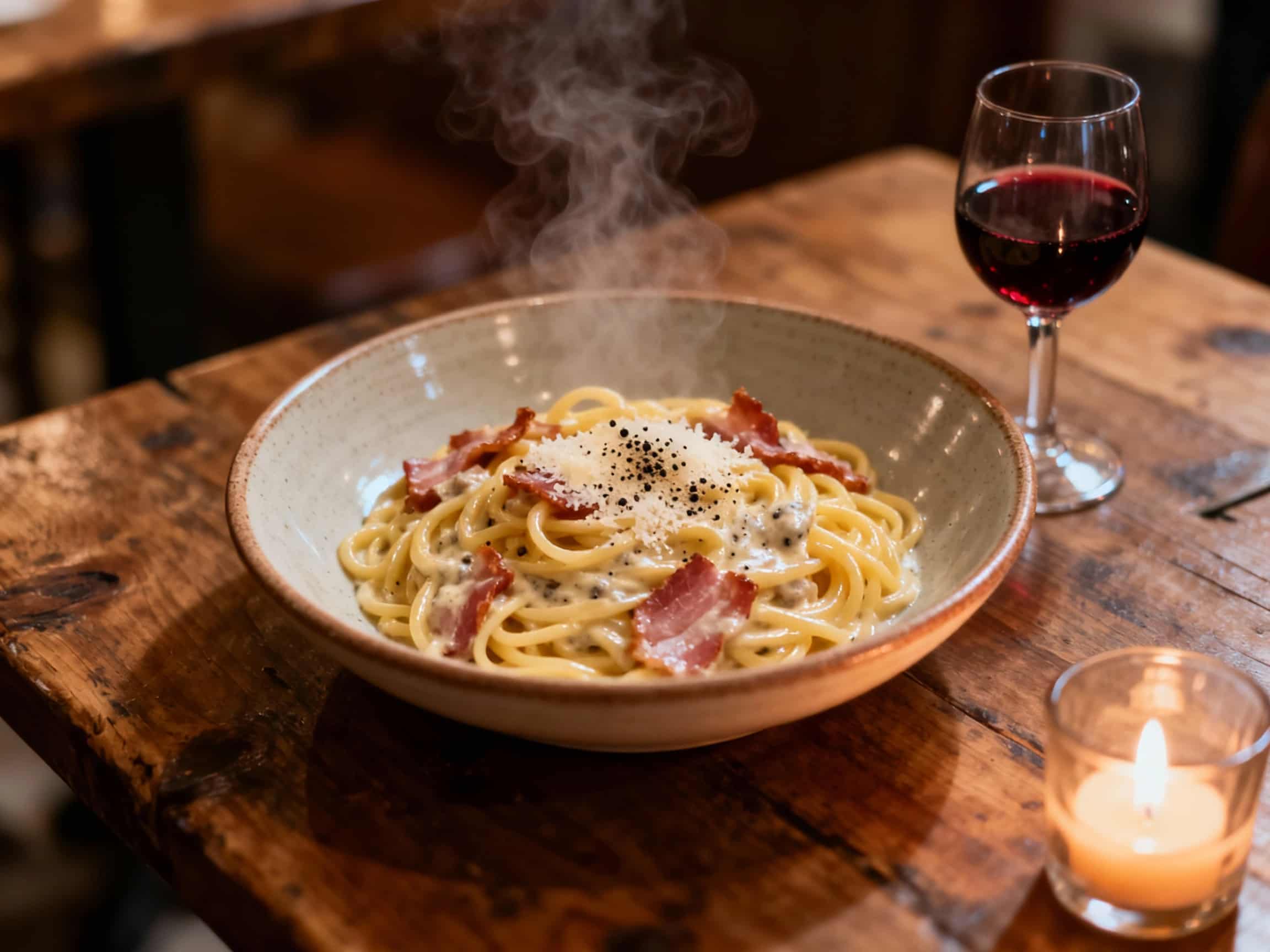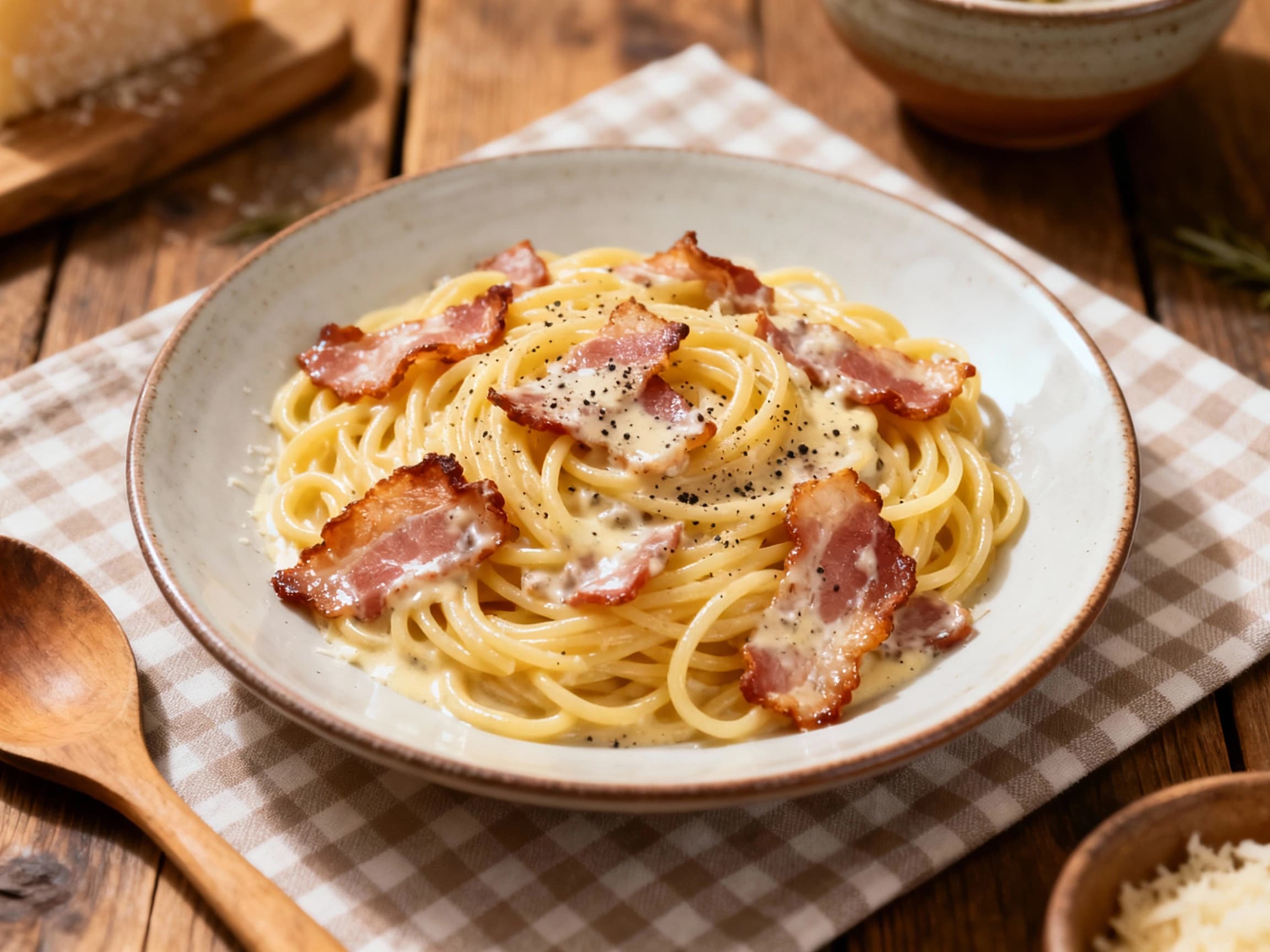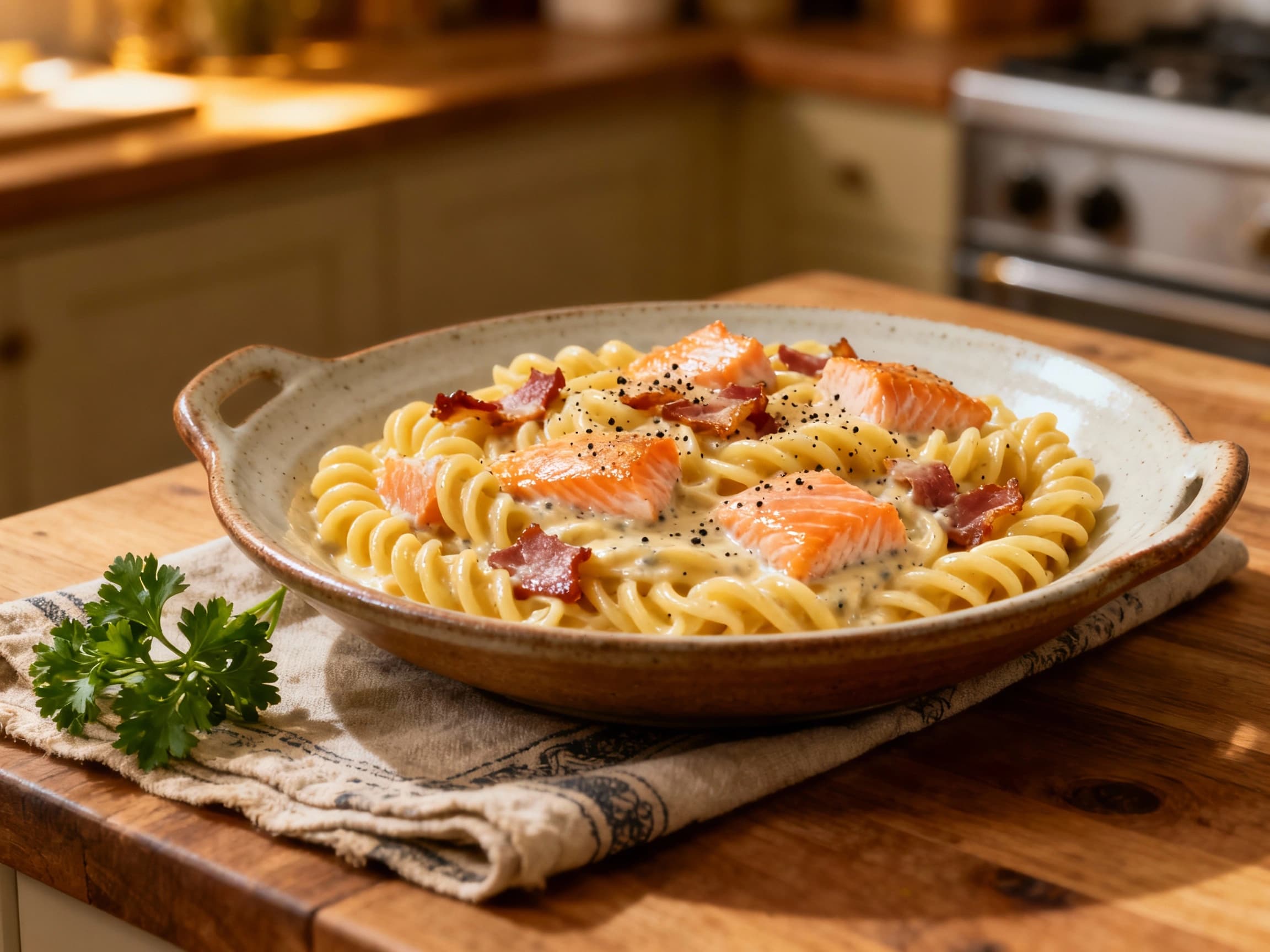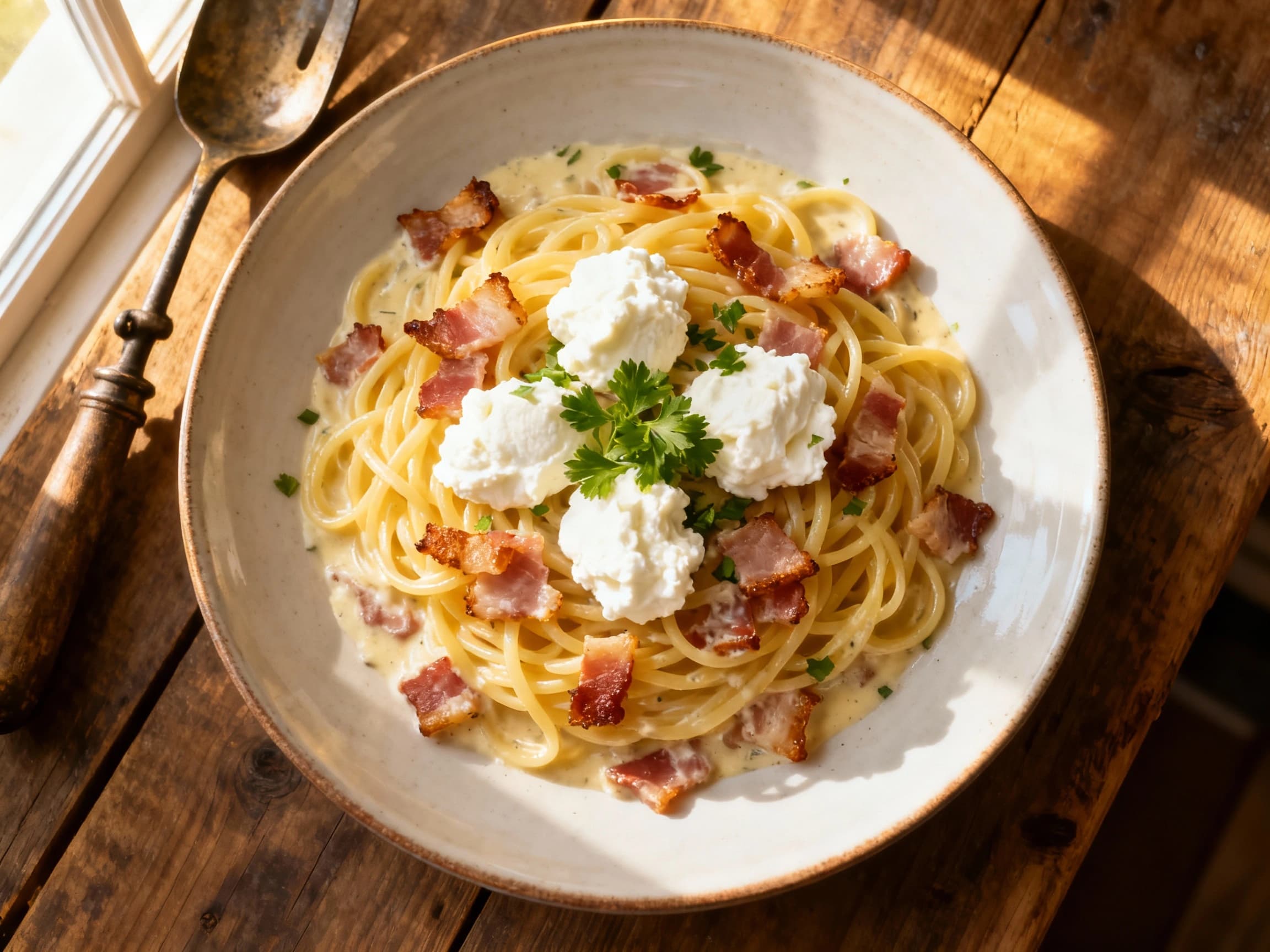
Spaghetti Carbonara
Spaghetti Carbonara
- Country
- Italy
- Region
- Lazio
- Recipes
- 3 Recipes
Dish information
Spaghetti Carbonara is a quintessential Roman pasta dish, celebrated for its rich, creamy (yet dairy-free) sauce and assertive flavors. Its origins are debated, with some linking it to the charcoal workers ('carbonari') who would prepare simple meals with readily available ingredients like dried pasta, cured pork, eggs, and pecorino cheese. Another theory suggests it emerged after World War II, possibly introduced by American troops who had rations of bacon and powdered eggs, which were then adapted by Roman cooks. The dish's simplicity belies its masterful execution; the perfect Carbonara relies on the emulsification of rendered guanciale fat, beaten eggs (traditionally just yolks for ultimate richness), salty Pecorino Romano cheese, and a generous amount of freshly ground black pepper. The heat of the pasta cooks the eggs gently, creating the signature velvety sauce without scrambling. While guanciale (cured pork jowl) is the most authentic choice, pancetta is a common substitute. The debate over adding cream is fervent, with traditionalists vehemently against it, believing it dilutes the authentic flavor and texture. This dish is a pillar of Roman cuisine, often found in trattorias throughout the Eternal City, embodying the rustic yet refined culinary heritage of the region. Its global popularity has led to countless variations, but the authentic Roman rendition remains a benchmark of Italian pasta mastery.
Timeline
Likely emergence or popularization of Spaghetti Carbonara post Italian liberation, possibly influenced by Allied soldiers' rations.
Spaghetti Carbonara begins appearing in cookbooks and gaining recognition as a distinct Italian dish.
Became a staple in trattorias across Rome and a symbol of Roman cuisine.
Global popularity surges, leading to widespread adaptation and recognition of the dish worldwide.


